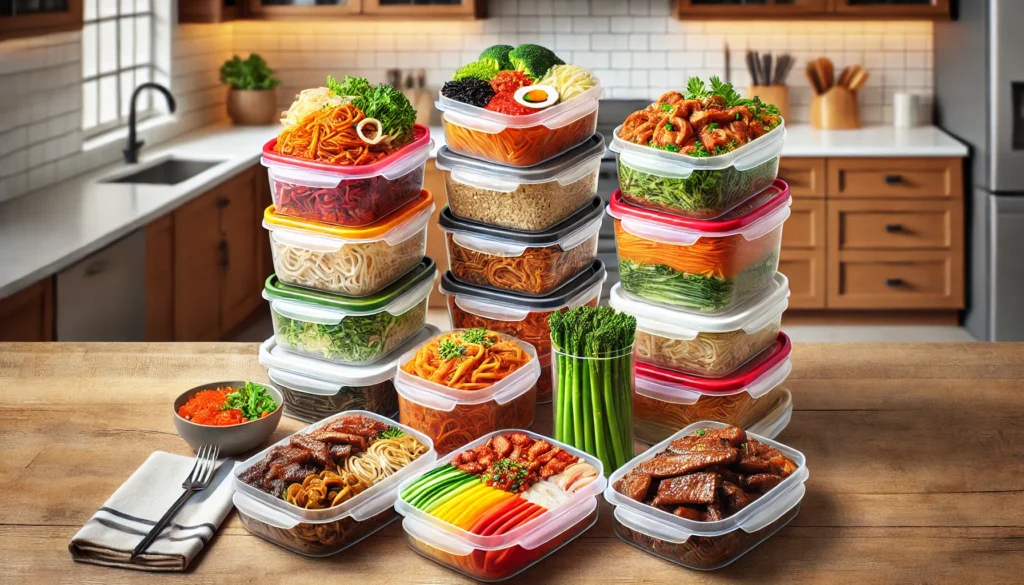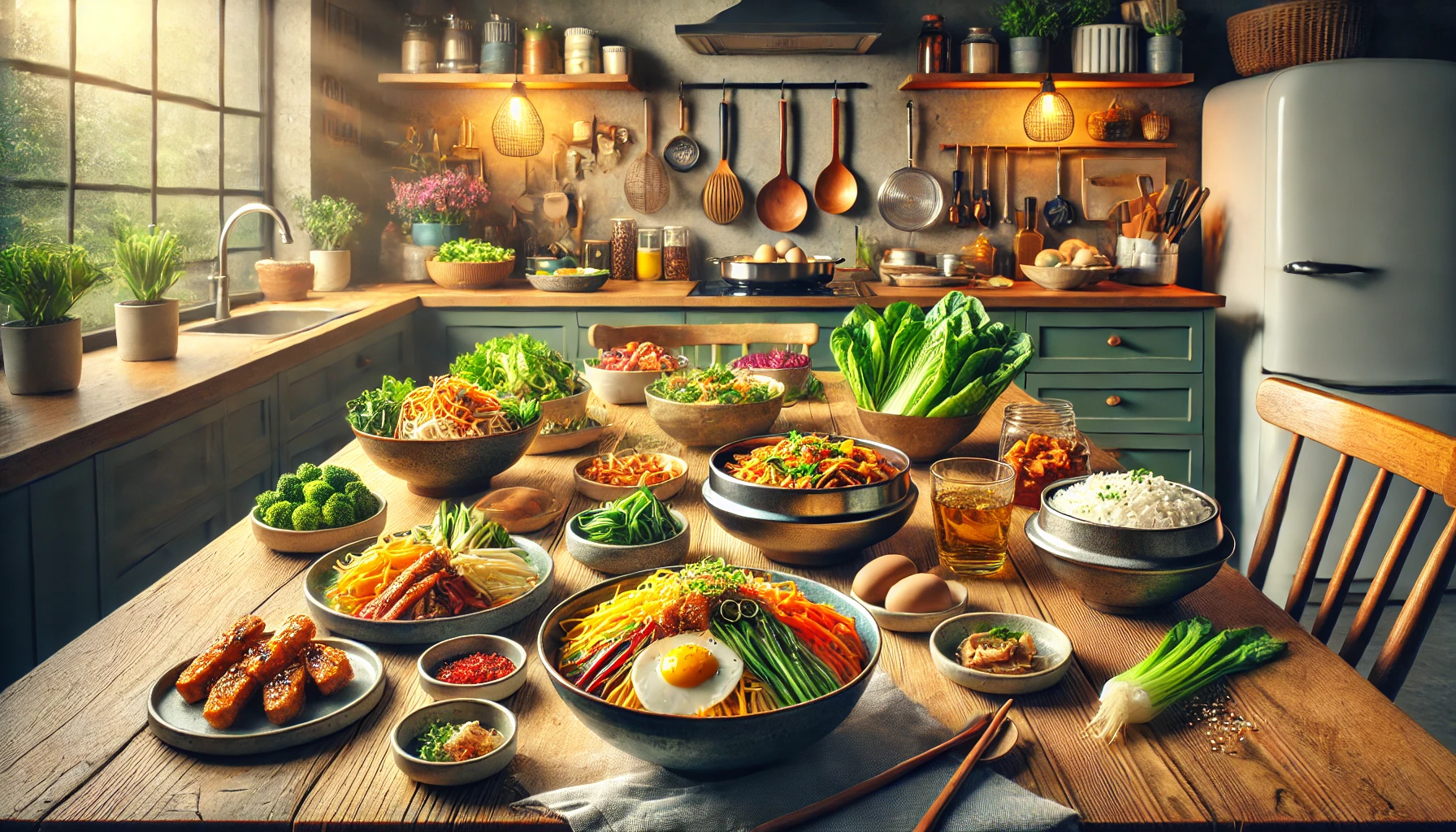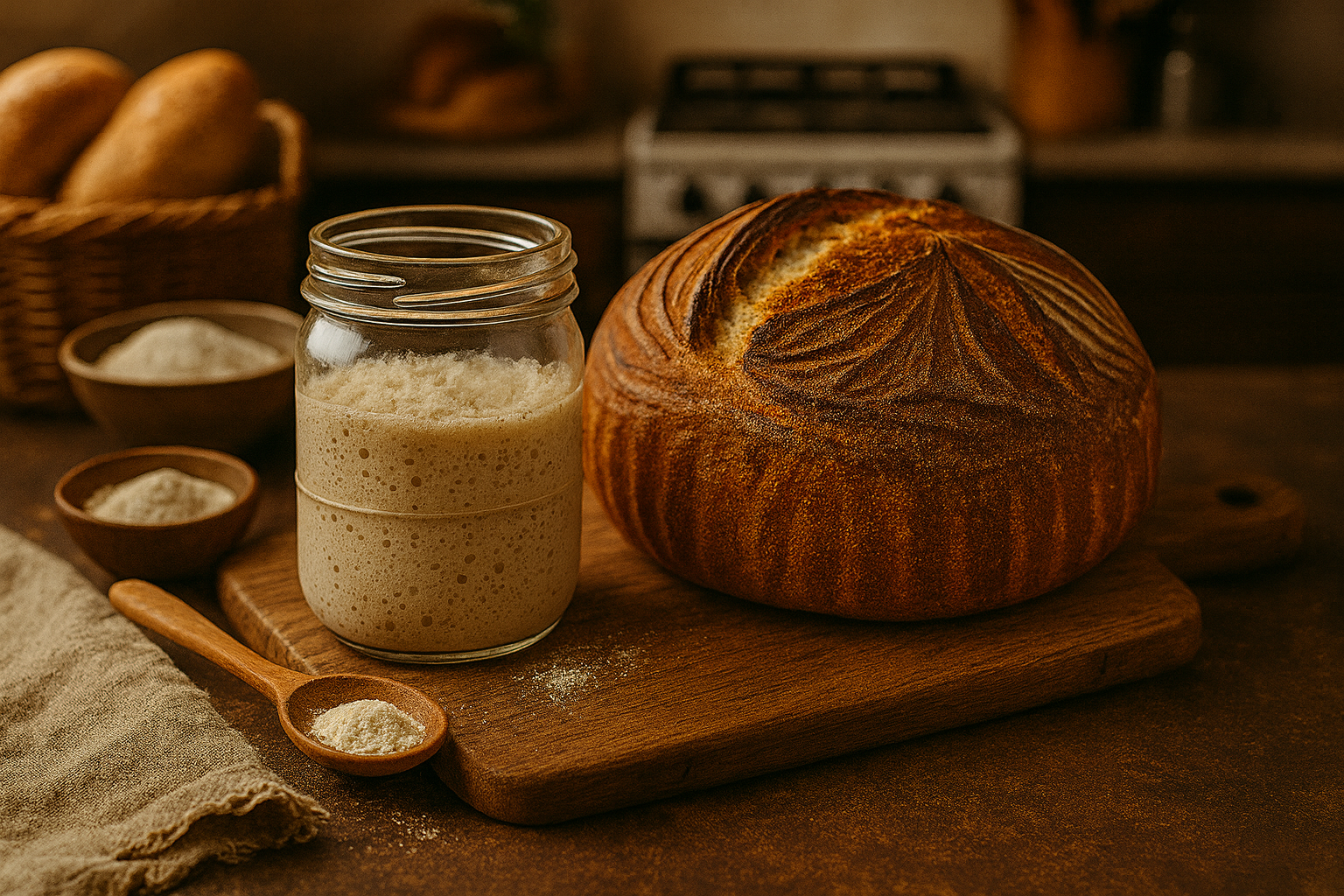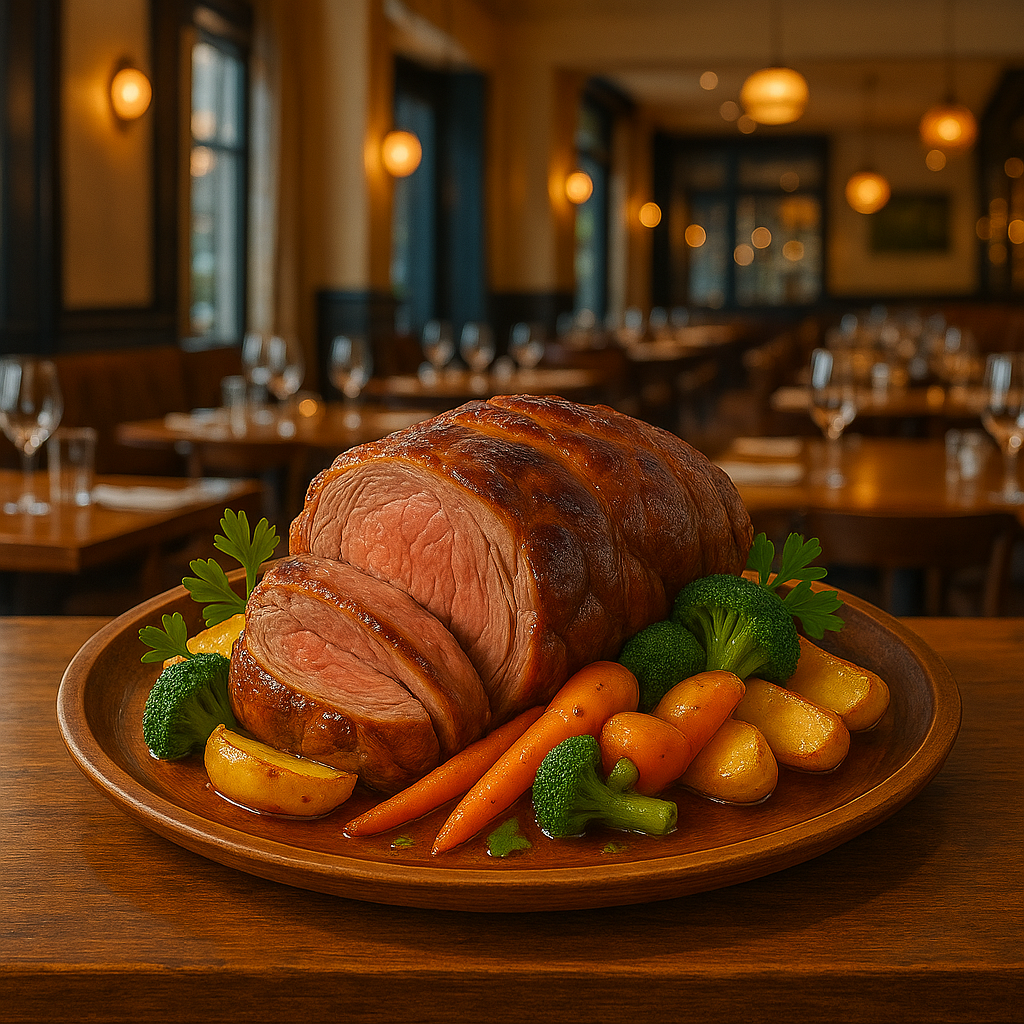Table of Contents
Introduction to Korean Cuisine
Korean cuisine is characterized by its vibrant flavors, diverse ingredients, and healthful profile. Central to many Korean dishes is rice, which not only serves as a staple carbohydrate but also complements a variety of other elements on the plate. A meal is typically accompanied by an array of banchan, or side dishes, that showcase seasonal vegetables, pickled items, and fermented delights such as Kimchi. This variety not only enhances the dining experience but also provides an abundance of nutrients.
Vegetables play a crucial role in Korean cooking, reflecting the country’s agricultural heritage and the importance of fresh produce. Korean dishes often focus on seasonal ingredients, making use of local vegetables like napa cabbage, radishes, and spinach. The preparation methods are equally distinctive, with techniques such as stir-frying, steaming, and grilling being fundamental in bringing out the natural flavors of the ingredients.
Meats, especially beef, pork, and chicken, are also integral to Korean cuisine, commonly marinated in flavorful sauces before cooking. These marinades typically contain ingredients such as soy sauce, garlic, and ginger, which infuse the meat with rich, savory flavors. Additionally, the use of unique seasonings is essential for the creation of memorable dishes. Gochujang, a fermented red chili paste, provides a spicy and sweet depth, while sesame oil contributes a nutty aroma to various preparations.
This combination of rice, vegetables, and meats, alongside distinctly Korean seasonings, makes the cuisine appealing to many. The adaptability of Korean dishes means they can be simplified for quick weeknight meals, allowing busy individuals to enjoy flavorful and satisfying food without extensive preparation. Understanding these foundational elements is essential for anyone looking to explore the pleasures of Korean cooking.
Essential Ingredients for Easy Korean Cooking
When it comes to preparing quick and easy Korean dishes, having a well-stocked pantry is crucial. Some of the essential ingredients that form the backbone of Korean cuisine are also ideal for busy weeknights. Key pantry staples include gochujang, a savory-sweet fermented chili paste that adds depth to any dish, and soy sauce, which is fundamental for flavoring proteins and vegetables. Both of these ingredients can be used in various recipes, making them versatile additions to your cooking arsenal.
Kimchi is another staple in Korean cuisine that is not only delicious but also incredibly quick to prep. This fermented vegetable dish, typically made with napa cabbage and radishes, is packed with probiotics and can serve as a side dish or condiment. You can either purchase kimchi from a grocery store or create your own version by fermenting vegetables for a few days, which allows for customization based on personal taste preferences.
For proteins, tofu is an excellent choice, as it absorbs the flavors of sauces and seasonings, making it a valuable option for both vegetarians and meat-eaters alike. Silken tofu can be quickly incorporated into soups or stir-fries, while firm tofu can be cubed and marinated for grilling or frying. Other common protein options include chicken, beef, or pork, which can be pre-marinated for convenience.
Vegetables like scallions, garlic, and carrots are frequently used in Korean cooking and can easily be prepared in advance. Scallions, in particular, provide a fresh crunch and mild flavor, enhancing various dishes. Consider sourcing these ingredients from local Asian markets or adapting recipes according to seasonal produce, which can make your cooking both affordable and diverse.
Incorporating these essential ingredients into your weeknight meals not only simplifies the cooking process but also ensures you can enjoy authentic flavors without the need for extensive preparation. By having these ingredients on hand, you’re well on your way to creating delicious Korean dishes with minimal hassle.
5-Minute Korean Fried Rice (Bokkeumbap)
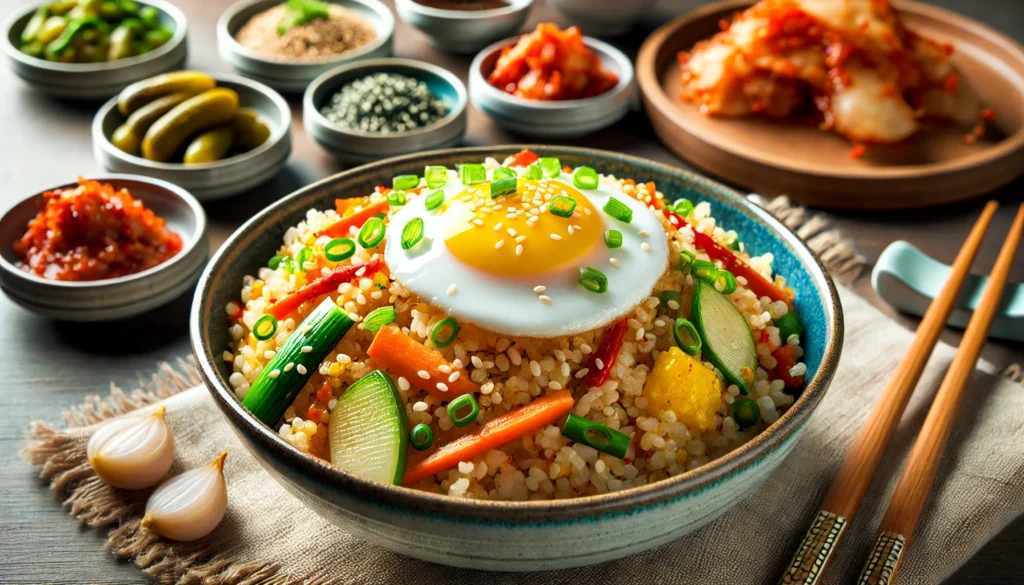
Korean fried rice, known as Bokkeumbap, is a versatile dish that can be whipped up in mere minutes, making it ideal for those hectic weeknights when time is of the essence. To start, gather your ingredients: cooked rice (preferably day-old rice for the best texture), a selection of vegetables such as carrots, peas, and bell peppers, and a protein of your choice, which could range from chicken to tofu or even a fried egg. It’s essential to have everything prepped to ensure a smooth cooking process.
Begin by heating a tablespoon of oil in a large skillet or wok over medium-high heat. Once the oil is shimmering, add any chopped vegetables you have on hand, sautéing them for approximately two minutes until they are tender yet still crisp. The great aspect of this dish is that it allows for flexibility—feel free to incorporate whatever leftover vegetables are lurking in your fridge. Next, introduce your protein of choice into the skillet, cooking it until it is heated through and well combined with the vegetables. If you are using eggs, simply push the veggies to one side, scramble the eggs in the other side, and mix them together once cooked.
Once your protein is ready, add the cooked rice, breaking up any clumps with your spatula. Stir diligently while allowing the rice to fry for about three to four additional minutes. This allows the rice to become slightly crispy while blending with the flavors of the vegetables and protein. Season the dish with soy sauce, sesame oil, and a sprinkle of sesame seeds, adjusting to taste. For an extra kick, consider adding gochujang (Korean chili paste) or kimchi for an additional layer of flavor.
In essence, 5-Minute Korean Fried Rice (Bokkeumbap) is not just a quick meal option but also an opportunity to creatively utilize leftovers and customize to personal preferences. Whether you are an experienced cook or a novice in the kitchen, Bokkeumbap is a delightful dish that can cater to anyone’s taste, all while significantly reducing the time spent cooking on busy evenings.
Quick Korean Beef Bulgogi
Korean beef bulgogi is a beloved dish characterized by its sweet and savory flavor profile. For busy weeknights, preparing this dish can be streamlined through an efficient marinating process. To start, select thinly sliced beef, which not only cooks quickly but also absorbs the marinade effectively. You can find pre-sliced options at many grocery stores, or you can easily slice your own beef at home. The key to achieving that classic bulgogi taste lies in the marinade.
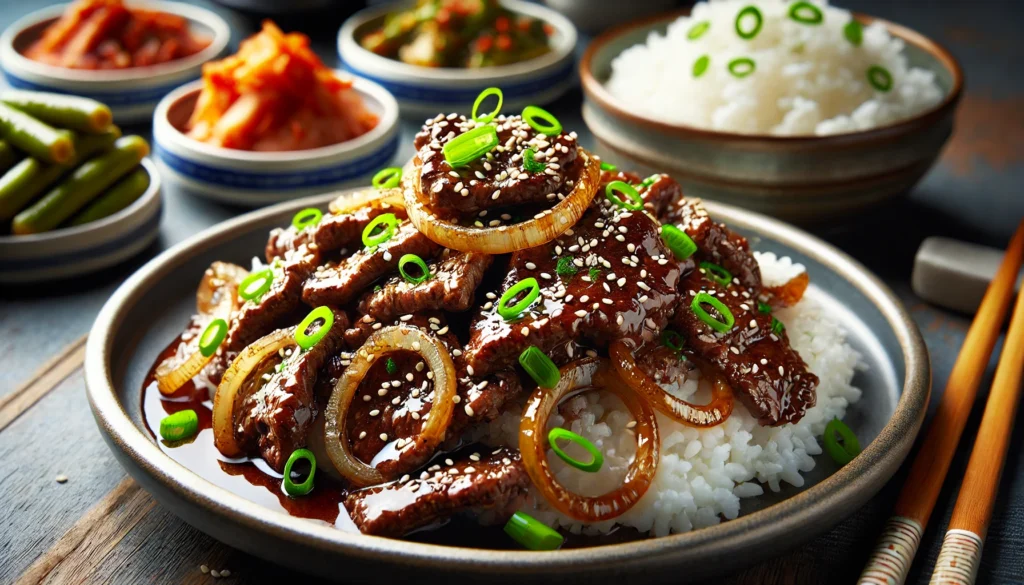
To make a quick bulgogi marinade, combine soy sauce, sugar, sesame oil, minced garlic, and black pepper in a bowl. Optionally, for added complexity, you may incorporate grated ginger and a splash of pear juice, which tenderizes the meat and enriches the flavor. Allow the beef to marinate in this mixture for at least 30 minutes, but preferably a few hours or overnight in the refrigerator. This preparation can be done ahead of time, creating a convenient meal solution for busy schedules.
If you desire variation, chicken or tofu can serve as excellent alternatives to beef in the bulgogi recipe. For chicken, use boneless thighs or breasts, and slice them thinly to ensure even marination and cooking. Tofu is another great option, especially for vegetarians; firm tofu can be cubed and marinated similarly to beef. Both options maintain the essence of bulgogi while catering to diverse dietary preferences.
When you’re ready to cook, heat a skillet over high heat, adding a small amount of oil. Stir-fry the marinated beef (or selected protein) until cooked through, which usually takes about five to seven minutes. This method makes preparing a delicious Korean beef bulgogi meal not only quick but also agreeable for any busy weeknight dinner.
Easy Spicy Korean Noodles (Bibim Guksu)
Bibim Guksu, or spicy cold noodles, is a traditionally cherished Korean dish that offers a delightful combination of flavor and simplicity, making it an ideal choice for busy weeknights. In just under 20 minutes, this recipe allows you to whip up a quick meal, providing a welcome respite from the hustle and bustle of daily life. The dish primarily features thin wheat noodles that are served cold, making them a refreshing option during warmer months.
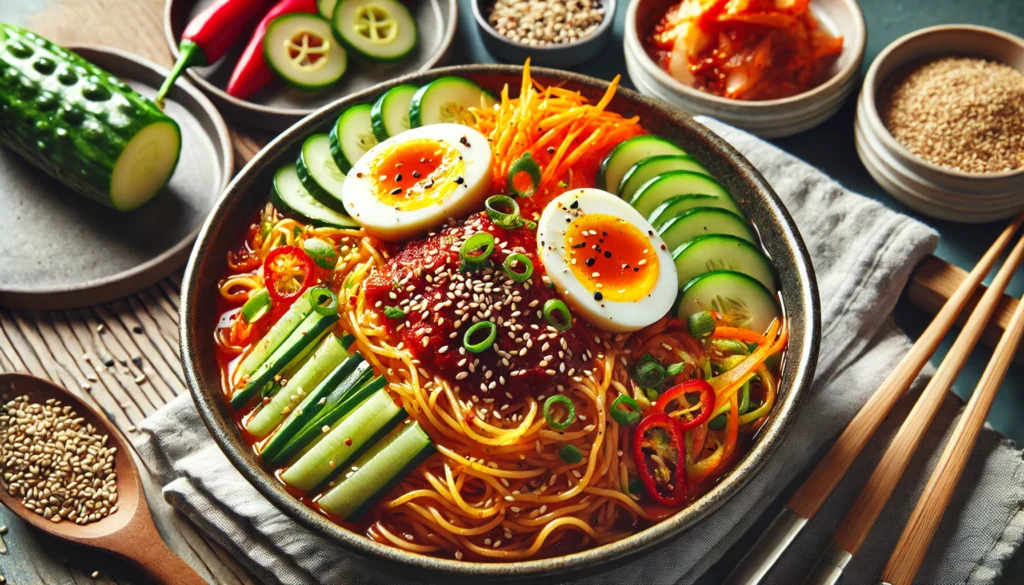
To prepare Bibim Guksu, start by cooking the noodles according to the package instructions. Once cooked, rinse them under cold water to stop the cooking process and enhance their texture. The star of this dish lies in its sauce, a zesty blend of gochujang (Korean chili paste), sesame oil, soy sauce, and a sweetener such as honey or sugar. This sauce can be adjusted according to personal taste, offering a balance of spicy, sweet, and savory notes that complement the cold noodles perfectly.
One of the main benefits of Bibim Guksu is its versatility. You can customize the dish with a variety of toppings according to dietary preferences or availability in your pantry. Common additions include sliced cucumbers, shredded carrots, boiled eggs, and even proteins like tofu or grilled chicken, ensuring that everyone can enjoy their personalized version. For a nutritious twist, consider adding fresh leafy greens or kimchi to enhance the flavors while boosting the overall nutritional value.
Not only is this recipe quick and simple, but it also beautifully demonstrates the vibrant flavors of Korean cuisine. The combination of spicy sauce and cold noodles creates a satisfying meal that can easily be prepared on hectic evenings, making it a go-to option for anyone seeking delicious and easy Korean dishes.
Simple Korean Stews (Jjigae)
Korean stews, known as jjigae, are a staple in many households, particularly due to their comforting taste and ease of preparation. Among various jjigae recipes, kimchi jjigae stands out as a primary dish that exemplifies both convenience and flavor. This stew not only utilizes kimchi but offers a warm, hearty meal that can be made within minutes, making it ideal for busy weeknights.
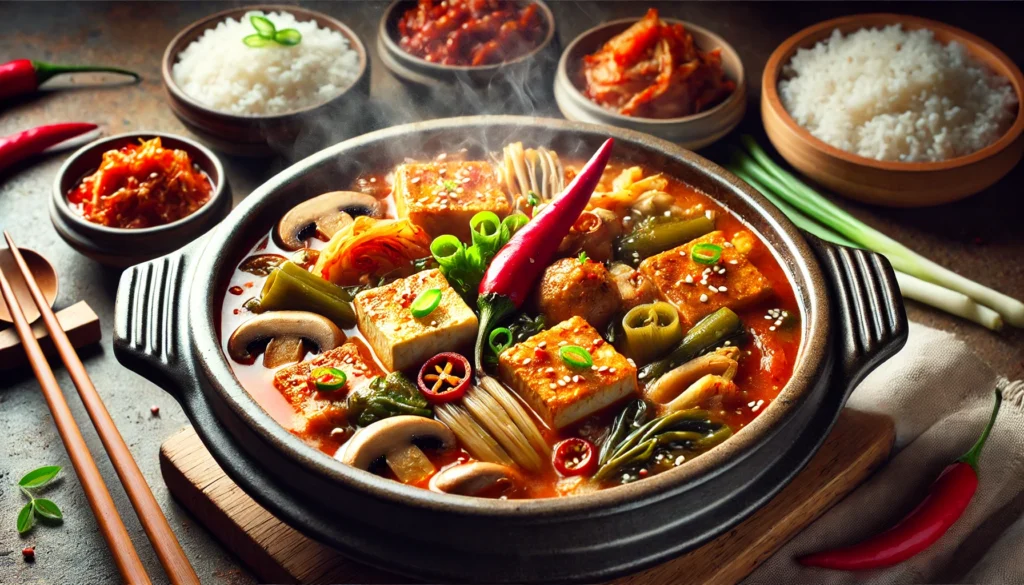
To prepare a basic kimchi jjigae, one will need a few core ingredients: well-fermented kimchi, tofu, and a broth base. A simple broth can be prepared using water and adding ingredients such as gochugaru (Korean red pepper flakes) for spice and depth of flavor. The addition of vegetables such as onions or mushrooms can enhance the texture and richness of the stew.
Leftover kimchi can be a perfect starting point for this dish. As kimchi ages, it becomes more flavorful, complementing the stew and infusing it with a tangy essence. For extra protein, one can incorporate various options, including pork, tuna, or even a plant-based alternative like tempeh. This adaptability not only caters to different dietary preferences but also ensures that one can utilize whatever ingredients are on hand.
Once the base is ready, combine all elements in a pot, and allow them to simmer on low heat. The result will be a steaming bowl of jjigae, rich in flavors and packed with warmth, all achievable within a short time frame. Consider serving kimchi jjigae with a side of steamed rice, which rounds out the meal beautifully. Ultimately, the simplicity and versatility of jjigae make it an exceptional choice for anyone seeking to whip up a satisfying dish quickly.
Quick and Healthy Korean Wraps (Ssam)
Preparing quick and healthy Korean wraps, known as Ssam, is an excellent option for busy weeknights. These wraps are not only nutritious but also versatile, allowing for various filling options to cater to individual preferences and tastes. At the foundation of every Ssam is a sturdy lettuce leaf, which serves as a perfect vessel for a variety of delicious ingredients.

To create your Korean wrap, start by selecting fresh, crisp lettuce leaves, such as romaine or butter lettuce. The slightly crisp texture of these leaves provides an excellent crunch while also being a low-calorie, nutrient-dense base. For the filling, consider incorporating grilled meats like bulgogi, which is marinated beef, or grilled chicken, ensuring a delicious source of protein. Alternatively, grilled tofu or an array of roasted vegetables can make for a satisfying vegetarian option that retains the flavor profile characteristic of Korean cuisine.
Another essential component of a Korean wrap is the dipping sauce. Options such as ssamjang, a flavorful mixture of fermented soybean paste and chili paste, provide a rich umami flavor that enhances the overall taste of the wrap. Additionally, sesame oil mixed with soy sauce or a simple vinegar-based dressing can add a delightful tang. Feel free to include sliced garlic, green onions, or even kimchi for added layers of flavor.
Assembling these wraps is straightforward; simply lay the meat or vegetables onto a lettuce leaf, drizzle with your desired sauce, and wrap it all up. This method of meal preparation not only facilitates a quick and nutritious dinner but also encourages a fun and interactive dining experience as each person can customize their own wrap. Overall, Ssam represents a perfect blend of health and convenience for anyone looking to enjoy Korean flavors amidst a busy lifestyle.
One-Pan Korean Chicken and Vegetables
For those with a busy lifestyle, preparing meals that are both quick and flavorful can feel like a challenge. However, a one-pan Korean chicken and vegetables dish is an excellent solution, combining convenience and taste in a single preparation. This recipe allows you to bring the vibrant flavors of Korean cuisine into your weeknight meals without overwhelming your schedule or kitchen cleanup.

The key to achieving a delicious flavor profile lies in the marination of the chicken. Using staples such as soy sauce, sesame oil, and gochujang (Korean red pepper paste) creates a tasty marinade that infuses the chicken with authentic Korean taste. To prepare, simply combine the marinade ingredients in a bowl and let the chicken soak for at least 30 minutes. For an added depth of flavor, consider marinating it overnight, allowing the spices to penetrate the meat more thoroughly.
Once the chicken is marinated, the next step involves preparing seasonal vegetables. Choose vibrant options like bell peppers, broccoli, and zucchini, which not only enhance the dish’s presentation but also contribute to a balanced meal. These vegetables can be chopped and added directly into the pan with the chicken, promoting a unity of flavors and textures.
To execute this dish efficiently, heat oil in a large skillet over medium heat and add the marinated chicken, allowing it to sear on all sides. Then, introduce the vegetables and cover the pan to steam them until tender yet crisp. This method ensures that the chicken remains moist and the vegetables retain their nutrients, creating a wholesome meal in less than 30 minutes. The simplicity and deliciousness of this one-pan Korean chicken and vegetable recipe exemplify how busy evenings can still include delightful home-cooked meals.
Blue Apron Meets Korean Cooking: Meal Prep Tips
Preparing Korean meals during a hectic week can be made manageable through strategic meal prep techniques. By incorporating a few essential practices, you can streamline your cooking process and enjoy delightful Korean dishes without excessive time commitment. One effective strategy is batch cooking staples like rice and proteins. Korean cuisine often revolves around rice, and preparing a large batch at once ensures you have a ready base for various dishes throughout the week. Consider cooking enough rice for several meals; simply store it in airtight containers in the refrigerator for convenient reheating.
Additionally, proteins such as chicken, beef, or tofu can be marinated and cooked in bulk. Marinating not only enhances the flavors but also allows for easy transformation into different dishes. For instance, marinate chicken in gochujang for a spicy flavor, then use it in a stir-fry or as a filling for lettuce wraps. By cooking proteins in larger quantities, you can mix and match with various side dishes or turn them into quick meals, facilitating an easy transition from a busy day to a homemade Korean dinner.
Another essential element of meal prep is managing your condiments and sauces efficiently. Korean cooking often relies on specific sauces, such as soy sauce, sesame oil, and kimchi. Keeping kimchi readily available can offer a burst of flavor to any dish without preparation time. Consider making a batch of spicy dipping sauce or sesame dressing at the beginning of the week, storing them in jars for quick access. This not only saves time but also encourages the inclusion of traditional flavors without the need for extensive preparation during busy nights.
Finally, organizing your ingredients by keeping them easily accessible can simplify your cooking routine. Pre-chop vegetables, align your spices by dish, and label your sauces. Such organization ensures a smoother cooking flow, making weeknight Korean meals enjoyable rather than a stressful task. With these meal prep tips, you can experience authentic Korean cooking while managing a busy schedule.
